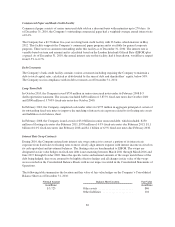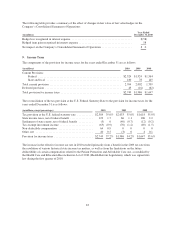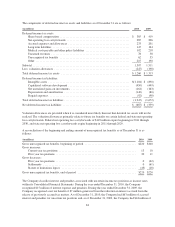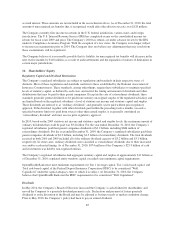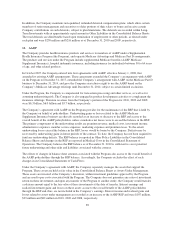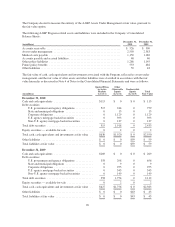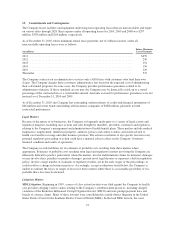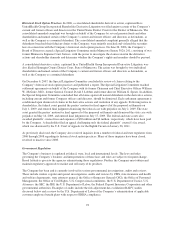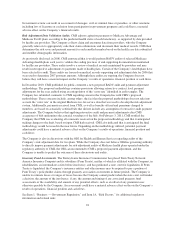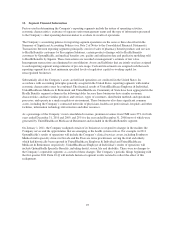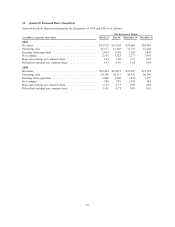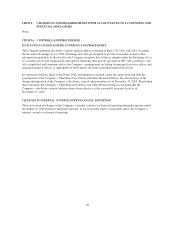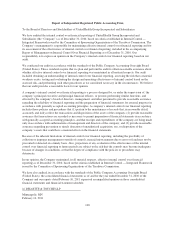United Healthcare 2010 Annual Report Download - page 94
Download and view the complete annual report
Please find page 94 of the 2010 United Healthcare annual report below. You can navigate through the pages in the report by either clicking on the pages listed below, or by using the keyword search tool below to find specific information within the annual report.certified a class of health care providers for certain of the RICO claims. In 2006, the trial court dismissed all of
the claims against the Company in the lead MDL lawsuit, and the Eleventh Circuit Court of Appeals later
affirmed that dismissal, leaving eleven related lawsuits that had been stayed during the litigation of the lead MDL
lawsuit. In August 2008, the trial court, applying its rulings in the lead MDL lawsuit, dismissed seven of these
lawsuits (the seven lawsuits). The trial court also dismissed all but one claim in an eighth lawsuit, and ordered
the final claim to arbitration. In December 2008, at the plaintiffs’ request, the trial court dismissed without
prejudice one of the three remaining lawsuits. The court also denied the plaintiffs’ request to remand the
remaining two lawsuits to state court and a federal magistrate judge recommended dismissal of those suits. In
April 2009, the plaintiffs in these last two suits filed amended class action complaints alleging breach of contract,
but those amended complaints were subsequently dismissed without prejudice. In July 2010, the Eleventh Circuit
reversed the trial court’s dismissal of the seven lawsuits and remanded those cases to the trial court for further
proceedings. In addition, the Company is party to a number of arbitrations in various jurisdictions involving
claims similar to those alleged in the seven lawsuits. The Company is vigorously defending against the remaining
claims in these cases.
AMA Litigation. On March 15, 2000, a group of plaintiffs including the American Medical Association (AMA)
filed a lawsuit against the Company in state court in New York, which was removed to federal court. The
complaint and subsequent amended complaints asserted antitrust claims and claims based on the Employee
Retirement Income Security Act of 1974, as amended (ERISA), as well as breach of contract and the implied
covenant of good faith and fair dealing, deceptive acts and practices, and trade libel in connection with the
calculation of reasonable and customary reimbursement rates for non-network health care providers by the
Company’s affiliates. On January 14, 2009, the parties announced an agreement to settle the lawsuit, along with a
similar case filed in 2008 in federal court in New Jersey. Under the terms of the settlement, the Company and its
affiliated entities will be released from claims relating to their out-of-network reimbursement policies from
March 15, 1994 through the date of final court approval of the settlement and the Company agreed to pay $350
million (the settlement amount) to a fund for health plan members and out-of-network providers in connection
with out-of-network procedures performed since March 15, 1994. The agreement contains no admission of
wrongdoing. The court granted preliminary approval of the settlement over the objections of certain plaintiffs’
counsel on December 1, 2009, and granted final approval of the settlement on September 20, 2010. On
October 18, 2010, the Company paid the settlement amount, plus interest, to an escrow account established by
the plaintiffs. Several members of the plaintiff class have filed appeals challenging approval of the settlement.
Other lawsuits in various jurisdictions relating to the calculation of reasonable and customary reimbursement
rates for non-network health care providers remain pending against a number of health insurers, including the
Company.
California Claims Processing Matter. In 2007, the California Department of Insurance (CDI) examined the
Company’s PacifiCare health insurance plan in California. The examination findings related to the timeliness and
accuracy of claims processing, interest payments, provider contract implementation, provider dispute resolution
and other related matters. On January 25, 2008, the CDI issued an Order to Show Cause to PacifiCare Life and
Health Insurance Company, a subsidiary of the Company, alleging violations of certain insurance statutes and
regulations in connection with the CDI’s examination findings. On June 3, 2009, the Company filed a Notice of
Defense to the Order to Show Cause denying all material allegations and asserting certain defenses. The matter
has been the subject of an administrative hearing before a California administrative law judge (ALJ) since
December 2009. CDI amended its Order to Show Cause three times in 2010 to allege a total of 992,936
violations, the large majority of which relate to an alleged failure to include certain language in standard claims
correspondence during a four month period in 2007. Although we believe that CDI has never issued an aggregate
penalty in excess of $8 million, CDI alleges in press reports and releases that the Company could theoretically be
subject to penalties of up to $10,000 per violation. The Company is vigorously defending against these claims.
After the ALJ issues a ruling at the conclusion of the administrative proceeding, the California Insurance
Commissioner may accept, reject or modify the ALJ’s ruling, issue his own decision, and impose a fine or
penalty. The Commissioner’s decision is subject to challenge in court.
92


